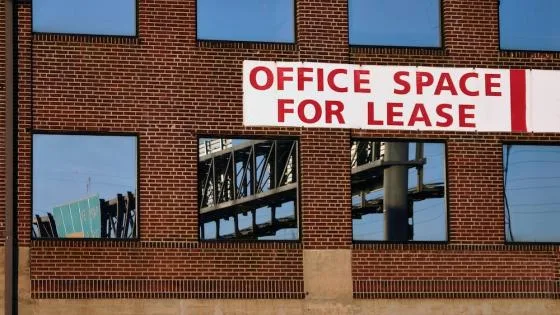We’ve worked with a lot of clients and investors over the years, and commercial leases are one of the topics that come up again and again – usually with some confusion surrounding it.
Most people assume commercial leases work like residential ones, just with bigger numbers. But the structure is completely different.
It All Starts with the Time Commitment
Commercial leases are typically much longer than residential leases. That’s because when a business moves into a space, they’re not just unpacking a few boxes and setting up shop. They’re often investing a significant amount of money to outfit the space for their specific uses.
Take an oral surgeon, for example. We worked with an oral surgeon who needed very specific improvements to accommodate his practice – things like medical sinks, specialized equipment, and ADA-compliant features. That kind of buildout isn’t cheap. So if you’re spending that kind of money, you want to be in the space long enough to make it worthwhile.
This is true across all types of businesses. Whether it’s a dentist, a boutique gym, or a coffee shop, once a business establishes itself at a location, moving becomes disruptive. Clients get used to coming to a specific corner or storefront. Uprooting that routine can cost a business far more than just the moving expenses.
That long-term commitment is the foundation of most commercial lease structures. And it shapes everything else in the lease – from rent increases to maintenance responsibilities.
Rent Escalations Are the Norm
If a business is going to sign a 10-year lease, they usually want to lock in their rent terms. That gives them predictability. But from the landlord’s side, flat rent over a decade doesn’t make much sense.
Inflation erodes the value of money. So if you’re collecting the same rent ten years from now as you are today, you’re actually earning less in real terms.
That’s why commercial leases almost always include an annual escalation, usually somewhere between 2% and 5%. The exact number is negotiable, and it often depends on how in-demand the space is. A property with lots of interested tenants may come with a higher escalation baked into the lease.
Who Pays for What?
Another key difference between commercial and residential leases is how expenses are divided.
In a commercial lease, the tenant is typically responsible for many of the ongoing costs. If they’re the only tenant on the property, they might pay for everything. In a multi-tenant building, those costs are usually split based on how much square footage each tenant occupies.
So if you have a 10,000 SF building with two tenants each occupying 5,000 SF, it’s common that each one covers 50% of shared property expenses. That typically includes things like:
- Property taxes
- Insurance
- Maintenance
- Management fees
The specific breakdown varies from lease to lease. But the general idea is that tenants take on more financial responsibility than they would in a residential lease, and in return, they get more control over space.
Common Exceptions
Certain systems, like heating and cooling, can fall into a gray area. In some leases, the tenant is required to maintain the HVAC system but not replace it. In others, they’re responsible for both. In single-tenant properties – like a Walgreens – it’s common for the tenant to handle full maintenance and replacement.
And then there are the big-ticket items: the roof, the parking lot, exterior lighting. In many true triple net leases, tenants cover a lot of these costs. But in other cases, the landlord keeps responsibility for the most expensive capital items. It really depends on the lease, and hte leverage of each party at the negotiation table.
Fixtures and Improvements
If a tenant makes permanent improvements to the space, what happens when they leave?
In many cases, those improvements stay with the property. That oral surgeon we mentioned earlier? He installed medical sinks, cabinetry, and other fixtures that were expensive to put in – and not practical to take out.
In an industrial building, a tenant might install cranes or heavy-duty lifts. These are often left in place when the lease ends because the cost of removing them outweighs the benefit.
So while tenants may spend heavily on customizing a space, those upgrades usually become the property of the landlord once the lease is up, especially if they’re not easily removable.
Conclusion
Commercial leases are built around long-term commitments, and that affects how rent, expenses, and improvements are structured. If you’re considering buying or leasing a commercial property, take time to understand who’s responsible for what. It’ll make a big difference in your bottom line.
Commercial tenants have better success in understanding and negotiating the terms of their leases with an advocate on their side of the table. We’re happy to advocate on your behalf to secure the best possible terms – call us today to get started.





